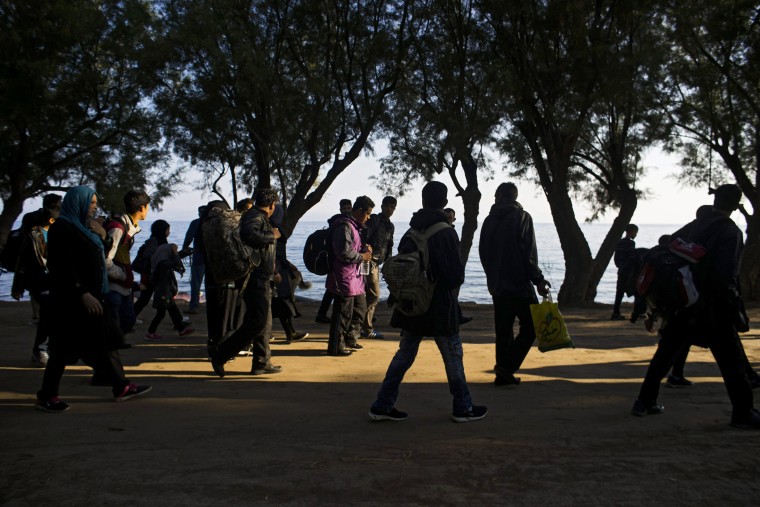Refugees apply for resettlement at American embassies or through the United Nations. If they pass that first hurdle, they are screened by outposts of the Department of State all over the world. They undergo investigations of their biography and identity; FBI biometric checks of their fingerprints and photographs; in-person interviews by Department of Homeland Security officers; medical screenings as well as investigations by the National Counter-terrorism Centre and by American and international intelligence agencies. The process may take as long as three years, sometimes longer. No other person entering America is subjected to such a level of scrutiny. Refugee resettlement is the least likely route for potential terrorists, says Kathleen Newland at the Migration Policy Institute, a think-tank. Of the 745,000 refugees resettled since September 11th, only two Iraqis in Kentucky have been arrested on terrorist charges, for aiding al-Qaeda in Iraq.
The details that should shape the debate over refugees
Perhaps we'd be having a more constructive debate over refugees if the American mainstream had a more complete picture.

Just in my own personal life, talking to people who have nothing to do with my work, I know folks who've told me in recent days that they're not entirely comfortable with Syrian refugees on American soil. Each of these people tend to look at the world through a center-left lens.
I thought of them reading Kevin Drum's piece this morning, urging liberals to consider the refugee debate from a mainstream perspective -- Republicans are desperate to exploit public fears for political gain, largely because they realize those fears exist.
"Here's the thing: to the average person, it seems perfectly reasonable to be suspicious of admitting Syrian refugees to the country," Kevin wrote. "We know that ISIS would like to attack the US. We know that ISIS probably has the wherewithal to infiltrate a few of its people into the flood of refugees."
I get it. If the United States welcomes 10,000 refugees, and even just 10 of them -- that's 0.1% -- are secret ISIS militants, 10 terrorists can do a lot of harm to a lot of people. The safe move, much of the country assumes, is to not take any chances.
With this in mind, those of us who believe welcoming refugees is the smart and responsible course should approach the debate with the understanding that, for much of the country, the public's perspective is driven primarily by fear.
Knowing how best to overcome fear is tricky, though some facts might help. The typical American may not understand, for example, that the vetting process for refugees is actually strict and lengthy. The average person may not know that one of ISIS's goals is turning the West against refugees, so when we give into fear, we actually help the people we're trying to hurt.
The typical U.S. voter may not know that half of the Syrian refugees brought to American soil have been children. The average person may not realize that the refugees are actually ISIS's victims and it's in our interests to show the world our compassion towards those whose lives have been uprooted by terrorists.
And the typical person probably hasn't seen this piece in The Economist, a center-right magazine, which was published a month ago.
That's two men out of 745,000 refugees in the post-9/11 era -- or roughly 0.0003%.
What's more, those two refugees -- neither one of whom were Syrian -- were caught trying to take advantage of lax American gun laws to send weapons to Iraq. Neither one plotted against the United States.
Who knows, maybe it's naive to think facts will trump fear. When someone is terrified, relying on reason may be a lost cause.
But I nevertheless believe we'd be having a more constructive debate if the mainstream had a more complete picture.